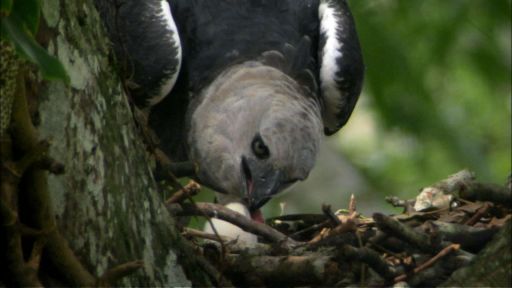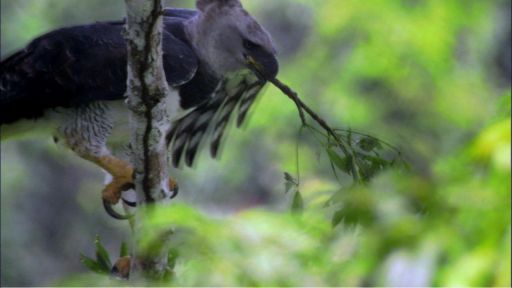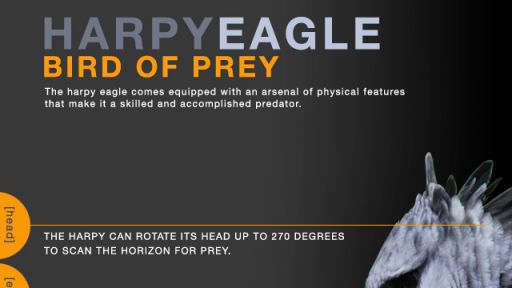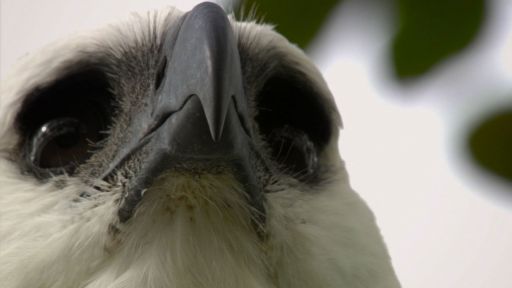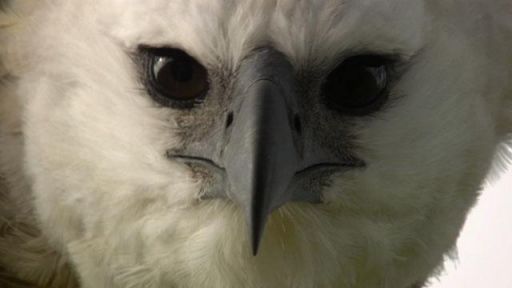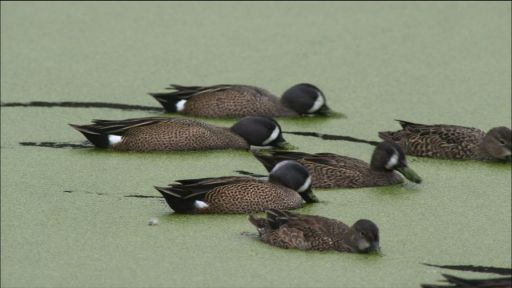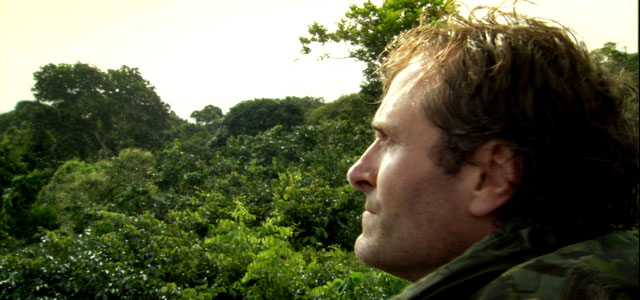
How and when did your interest in birds of prey first develop? What is it about these species of bird that you’re particularly drawn to? How are harpy eagles different from other birds of prey?
I discovered that a pair of kestrels was nesting within a short walk from our house when Iwas about seven years old. I spent many hours watching them. I would collect their regurgitated pellets at the base of the tree in which they were nesting and take them home to boil them up in the kitchen to see what they had been eating. The pellets would break down while boiling and I would be able to separate bone items. I noticed the prey species was changing as the summer progressed. My mother was exceptionally patient with me as I must have made the kitchen a terrible mess. I watched the young kestrels leave the nest, hopping up the nearby branches and finally taking their first flights. I remember the thrill of watching them for hours and hours after school in the summer when I should have been doing my homework. When I saw the wild Harpy eagles for the first time in South America I had that ‘thrill’ come back to me – here was a massive hunting machine that was living successfully in the forest. It staggered me that such a massive and refined hunting creature could survive in this strange place.
Compared to other wild birds of prey, relatively little is known about harpy eagle. What was your experience with harpy eagles prior to making this film?
Prior to making the film my experience of harpy eagles was very limited – but I went out to Venezuela on a recce and became confident that I had found a region where they were not impossible to find. I had a brilliant bird guide who was able to show me a few areas where there was evidence of the eagles. I found cleanly picked monkey skulls at the base of trees where the guide said they had been frequenting. It was just like picking up the pellets under the tree where I used to watch the kestrels as a boy. The guide was aware of the fact that the eagles were choosing massive Ceiba trees to nest in – that was very useful to know. It was also a big worry, as working at great heights in the rainforest has its own complications – whatever you are filming. But my gut feeling was that this was a great opportunity to make a film.
Harpy eagles are notoriously aggressive. How did you prepare for a shoot that demanded you and the crew share such close quarters with the birds?
I would re-phrase that and say that perhaps harpy eagles are notoriously fearless, rather than particularly aggressive. All birds of prey, including very small ones, will quite rightly be aggressive if they sense their nest is being attacked, so we knew that the scenario of placing the remote camera into the nest was going to be tricky. Other than that very brief moment, we never wanted to get any closer to them than we would need with the long lens. We would always want to be a distance from them where they would behave as if they were not aware or bothered that we were there.
Finding a harpy eagle nest in the Orinoco rainforest seems a bit like finding a needle in a haystack. How did you and the crew initially locate the harpy family and their nest?
When making wildlife films we always work with experts in the field as well as making our own decisions. It was with the help of local bird watchers that we were able to recce the area and make a plan with regard to the best area to focus on and where we would build platforms and make a camp in the jungle. So, I would say that yes, it was a haystack, but local information was indicating that needles had been sighted regularly in one corner!
Why and how did the idea for the “nest cam” develop? Was this the first time you used a method like this to capture footage of animals in the wild?
Putting cameras into nests of birds of prey to study them has been done before by both filmmakers and scientists. It is a valuable technique for gathering data which can help us learn how often and what they feed their young, as well as better understand the behavior of the young. As the cameras trigger through all daylight hours it is effectively a way of leaving a pair of eyes in the jungle 24/7 through rain, mosquitoes, no food or water for weeks at a time. It makes a lot of practical and financial sense. There are, however, a few critical minutes when you install the camera that the parent birds of prey will wish to defend their nest. I had used these cameras successfully on many other birds of prey and knew that it could provide valuable footage.
Did the eagles have any issues with the camera being so close to them? And, if so, how long did it take for them to become comfortable with it being there?
I don’t think the eagles had any problems at all with the camera being in the nest, as it never moved or made a noise. I think that if it had it would have been a different matter.
Jungle Eagle will most likely be many people’s first introduction to the harpy eagle. How do you hope this film will shape our understanding of birds of prey?
I hope that the film will make people realize that harpy eagles are astonishing as they are evidence that this world still has special creatures in special places. Vast tracts of forest are extraordinarily special places. Today, they still contain fabulous creatures like the harpy eagle. But smaller jungles cannot hold them. The eagles disappear very quickly if the forest is fragmented. They NEED vast forests to survive. Therefore we should treasure the chance for Harpy eagles to continue to thrive, as they must be one of nature’s greatest treats. The tragedy with Harpy eagles is that it is difficult to know just how many there might be left in the wild. I saw them. We filmed them. But there are hundreds of miles of jungle in South America where we have little idea if they exist.
If you had this film to do all over again, what would you do differently?
I’m not sure that I would do anything differently, but if I had the chance or the money I would have tried to stay out there for longer to see how our youngster would further develop. All these films can only ever have a finite amount of time and money. The skill is knowing how to spend it so that we end up with an interesting film. But when you start, when you finish and how long you spend in the jungle in between is a really hard call when you don’t know what will happen next. No one can tell you. It is only with hindsight that you realize maybe those weeks in November were slightly wasted and we should have used them in February. You are watching a youngster growing up and plan to be there for the key moments. With the Harpy eagle, no one was able to give us key dates: they just weren’t known. Moreover, pairs of birds are often different in their likes, hunting habits, and diet. The books would say that Harpies like to eat howler monkeys, as those in Panama did. But not ours. Other pairs would favour sloths above all. But not ours. So, you have to go with the flow and watch your own birds and make decisions as to when to leave and when to return when you are out there. This is not an easy way to make a film. Wiser filmmakers would choose subjects which are better studied. I get a thrill from knowing that what we are observing is what we should film, and what we have recorded is their behavior – which is new to science. So, it’s a great feeling that the film has hopefully recorded something which is valuable to us: understanding the harpy better and thus better able to look after them and the forests.
Fergus Beeley has been making Award winning wildlife films for the last twenty years. He also produced PBS Nature‘s White Falcon, White Wolf. He has simultaneously held directorships in new media companies, such as Interactive Frontiers, Inc, Creature Channel Ltd and Bristol Interactive Cluster. He is Director of FLB Fergus Beeley.

